
Tipulidae is a family of large crane flies in the order Diptera. There are more than 30 genera and 4,200 described species in Tipulidae, common and widespread throughout the world.

The Nematocera are a suborder of elongated flies with thin, segmented antennae and mostly aquatic larvae. This group is paraphyletic and contains all flies except for species from suborder Brachycera, which includes more commonly known species such as the housefly or the common fruit fly. The equivalent clade to Nematocera is the whole Diptera, with Brachycera as a subclade. Families in Nematocera include mosquitoes, crane flies, gnats, black flies, and multiple families commonly known as midges. The Nematocera typically have fairly long, fine, finely-jointed antennae. In many species, such as most mosquitoes, the female antennae are more or less threadlike, but the males have spectacularly plumose antennae.

Limoniidae is the largest of four crane fly families, with more than 10,700 species in more than 150 genera. Some studies have suggested it to be a paraphyletic group, with some limoniids being more closely related to Tipulidae and Cylindrotomidae than to other limoniids. Limoniid crane flies can usually be distinguished by the way the wings are held at rest. Limoniids usually hold/fold the wings along the back of the body, whereas other crane flies usually hold them out at right angles. Snow flies such as Chionea scita have no wings at all. Limoniids are also usually smaller than other crane flies, with some exceptions.

The Chioneinae are a subfamily of limoniid crane flies.
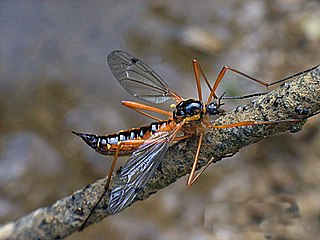
Ctenophora is a genus of true crane flies. The species are large, shiny black craneflies with large yellow, orange, or red markings to mimic wasps. Males have comb-like antennae. The larvae are saproxylic. The species are confined to old deciduous forests, orchards, and other habitats with continuity of the presence of dying and fallen trees. Ctenophora species are important bioindicators.

Dactylolabis is a genus of crane flies in the family Limoniidae. It is placed in its own subfamily, Dactylolabinae. Dactylolabis contains the following species:

Dicranoptycha is a genus of crane fly in the family Limoniidae.

Discobola is a genus of crane fly in the family Limoniidae.
Hoplolabis is a genus of crane fly in the family Limoniidae.

Ilisia is a genus of crane fly in the family Limoniidae.

Limnophila is a genus of limoniid crane flies in the family Limoniidae. There are at least 280 described species in Limnophila.
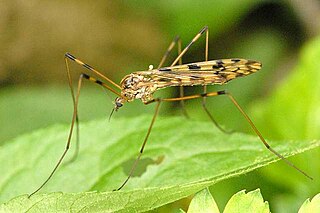
Metalimnobia is a genus of crane fly in the family Limoniidae.

Pilaria is a genus of crane flies in the family Limoniidae.
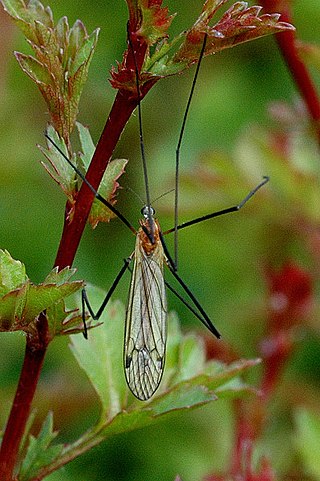
The Limnophilinae are a subfamily of tipulid crane flies. Some authors still use the name Hexatominae for this subfamily.

The Cylindrotomidae or long-bodied craneflies are a family of crane flies. More than 65 extant species in 9 genera occur worldwide. There are more than 20 extinct species.

Liogma is a genus of crane fly in the family Cylindrotomidae.
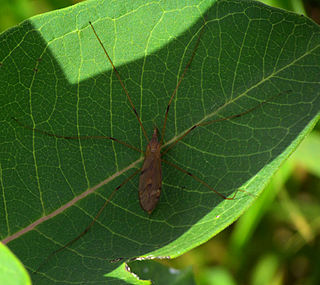
Eriopterini is a tribe of limoniid crane flies in the family Limoniidae. There are more than 20 genera and 3,800 described species in Eriopterini.

Hexatomini is a tribe of limoniid crane flies in the family Limoniidae. There are about 16 genera and at least 250 described species in Hexatomini.
Dicranoptycha nigripes is a species of limoniid crane fly in the family Limoniidae.
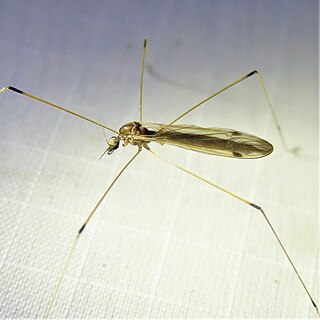
Limoniinae is a subfamily of limoniid crane flies in the family Limoniidae. There are more than 30 genera and 3,700 described species in Limoniinae, found worldwide.



















